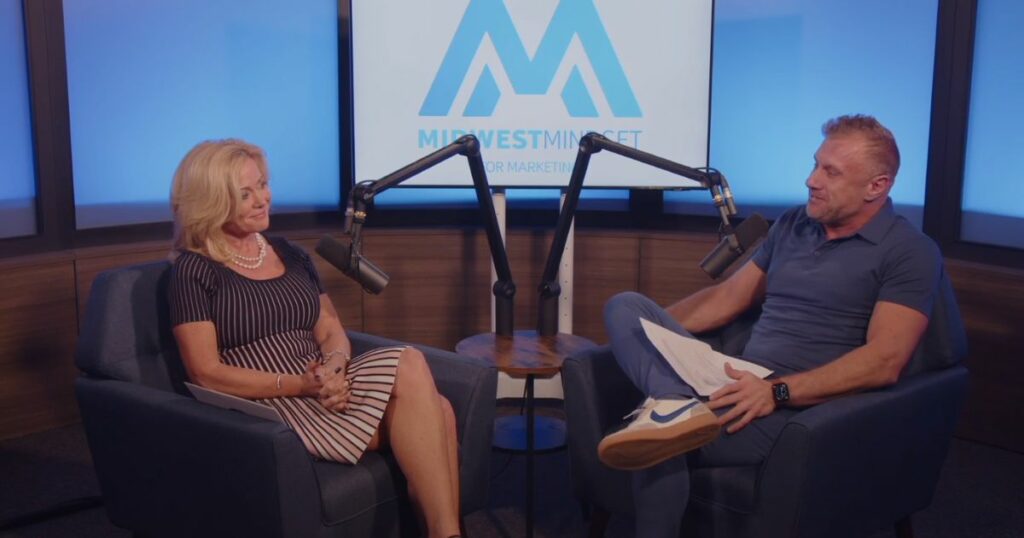Outbound Marketing for Omaha Businesses
What can outbound marketing do for your local Omaha business’s success? Welcome to the grand finale of our three-part series exploring the fascinating world of inbound and outbound marketing for Omaha businesses.
Regardless of the type of business, it’s essential to choose the right marketing strategy for your success.
That’s why we’ve created this series to help you understand these two powerful approaches and make informed decisions.

An Overview:
Part One: The Differences Between Inbound And Outbound Marketing
In the first part, we explore the fundamental differences between inbound and outbound marketing, their goals, tactics, and how they work together for a well-rounded strategy.
Part Two: What Is Inbound Marketing?
The second part focuses on inbound marketing, discussing its core principles, tactics, and best practices for creating valuable content and nurturing leads.

Part Three: Outbound Marketing Definition
Lastly, we dive into outbound marketing, exploring its various tactics and how to balance it with inbound marketing for a winning combination.
By the end of this series, you’ll have a clear understanding of both strategies and be better equipped to choose the right approach for your business goals.
Let’s get started on this insightful marketing journey.
Cold Calls and Emails: Connecting with Prospects Directly
Cold calling and cold emails are two outbound marketing tactics that involve directly reaching out to potential customers.
They can be an effective way to generate leads and make sales, especially for businesses with a well-defined target audience.
However, cold calling and cold emails can be challenging, as many people find them intrusive and may associate them with email spam. To increase the chances of success, it’s essential to do thorough research on your prospects and personalize your outreach. Focus on providing value and addressing the pain points of your potential customers.

For instance, a local business looking to expand its customer base may choose to cold call residents within a certain radius of its storefront. By doing so, they can introduce themselves and their products or services to potential customers who may not be aware of their existence.
Additionally, cold calling can be particularly successful for businesses that offer time-sensitive promotions or discounts. In these cases, the immediacy of a phone call can generate interest and urgency, leading to increased sales and brand awareness.
In my own experience, I’ve found that a well-crafted cold email or a carefully planned cold call can open the door to new business opportunities.
While it’s not always an easy process, persistence and personalization can go a long way.
Trade Shows and Events: Building Connections in Person
Trade shows and industry events are excellent opportunities to showcase your products or services, generate leads, and network with potential customers. By setting up an eye-catching booth or hosting an engaging presentation, you can make a lasting impression on your target audience.
While trade shows can be a high-cost marketing effort, the potential return on investment can be significant. In my own entrepreneurial journey, I’ve found that face-to-face interactions at trade shows have led to lasting business relationships and valuable connections.

Traditional Advertising: Reaching the Masses
Traditional advertising methods, such as radio ads, billboards, and TV commercials, allow you to reach a broad audience with your marketing message.
While these tactics may not be as targeted as inbound or digital marketing strategies, they can still play a crucial role in building brand awareness and driving interest in your products or services.
One thing to keep in mind is that traditional advertising can come with a high cost, especially for small businesses. To make the most of your marketing budget, consider focusing on the advertising channels that best align with your target audience and business goals.
For example, let’s imagine a small, independent coffee shop that has recently opened in a small city neighborhood. The owner wants to attract local customers and build a loyal customer base and wants something that works fast. He might consider putting up a spectacular and giving flyers in the street.
He might not know his ROI exactly, but it’s a sure and effective, and rapid way to get the message across the neighborhood.
Throughout my years in business, I’ve found that a well-placed billboard or a captivating radio ad can still turn heads and pique interest in what I have to offer. The key is to balance your marketing efforts with a mix of inbound and outbound strategies, ensuring that you’re reaching your audience effectively.

The Evolution of Outbound Marketing Definition: Adapting to the Digital Age
While outbound marketing has its roots in traditional advertising and direct outreach, it’s essential to recognize that the landscape has changed significantly in the digital age.
Tactics like email marketing and social media advertising have become increasingly important, offering businesses new ways to connect with their target audience.
In addition to these new-age tactics, businesses must also consider the increasing importance of search engine optimization (SEO) and pay-per-click (PPC) advertising to improve their online visibility. By optimizing their website and investing in targeted online ads, companies can attract more visitors and increase the chances of converting them into customers.
Moreover, the rise of mobile technology has led to a shift in consumer behavior, with more people browsing and shopping on their smartphones and tablets. As a result, businesses need to ensure that their marketing efforts are optimized for mobile devices, including creating responsive websites and mobile-friendly ads.

Email Marketing: The Power of Personalized Outreach
Email marketing has become a crucial component of outbound marketing strategies in the digital age.
By building a targeted email list and sending out personalized, engaging messages, you can nurture leads and encourage them to take action.
When done right, email marketing can be highly effective in driving sales and strengthening customer relationships. To maximize the potential of your email marketing efforts, focus on crafting compelling subject lines, providing valuable content, and segmenting your audience to deliver tailored messages.
In my own experience, email marketing has proven to be a powerful tool for driving revenue and maintaining connections with my customers. Remember to respect your subscribers’ inboxes and avoid spammy tactics that could damage your brand reputation.

Social Media Advertising: Reaching the Right People at the Right Time
Social media advertising is another essential aspect of modern outbound marketing.
Platforms like Facebook, Instagram, and LinkedIn offer highly targeted advertising options that allow you to reach your ideal customers based on demographics, interests, and behaviors.
While social media ads can be more intrusive than organic content, they can still deliver impressive results when done correctly. Invest in eye-catching visuals, compelling ad copy, and a well-defined targeting strategy to make the most of your social media advertising efforts.
In my own ventures, I’ve seen social media advertising drive significant traffic to my website, boost brand awareness, and generate valuable leads.

Balancing Inbound and Outbound Marketing
As you plan your marketing strategy, it’s important to recognize the benefits of both inbound and outbound marketing.
While inbound marketing excels at drawing customers in through valuable content, outbound marketing can help you actively reach out to potential customers and generate leads.
The key is to find the right balance between the two approaches, ensuring that your marketing efforts are comprehensive and effective. By combining the strengths of inbound and outbound marketing, you can create a well-rounded marketing strategy that drives results and grows your business.
To develop a well-rounded marketing strategy, it’s essential to find the right mix of inbound and outbound tactics. This balance will depend on your specific business goals, target audience, and available resources. For example, a company looking to build long-term relationships with customers might focus more on inbound marketing to establish trust and credibility, while a business seeking rapid growth and immediate sales might prioritize outbound efforts to quickly generate leads and drive conversions.

Outbound Marketing Definition in the Modern Era
Outbound marketing may seem like an old-school approach, but it still has a lot to offer businesses of all sizes, especially in Omaha.
By incorporating tactics like cold calls, trade shows, traditional advertising, email marketing, and social media advertising, you can actively reach out to potential customers and make your brand stand out from the competition.
As a seasoned entrepreneur, I’ve learned that outbound marketing can be an invaluable asset when used strategically and in conjunction with inbound marketing efforts.
Give it a try, and you might just find that it opens up new opportunities for your business.
Marketing in the age of the algorithm is overwhelming.
Are you feeling overwhelmed by the demands of marketing? Are you struggling to create content that effectively conveys your brand’s value proposition while engaging your audience?
Two Brothers Creative is here to help. As experienced marketers ourselves, we understand the challenges of selecting channels, preparing creatives, and then effectively promoting your content across multiple touchpoints. Our team is prepared to help you with the process.
Two Brothers Creative: Content in a Box
Together we’ll identify actionable steps you need to take, from selecting channels that best capture your audience’s attention to creating memorable storylines that keep them engaged. Say goodbye to confusion, wasted time, and financial underperformance with Two Brothers Creative.












